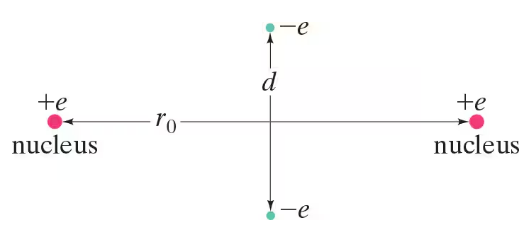One possible form for the potential energy (U) of a diatomic molecule (Fig. 40–8) is called the Morse Potential:
(a) Show that r0 represents the equilibrium distance and U0 the dissociation energy.

 Verified step by step guidance
Verified step by step guidance Verified video answer for a similar problem:
Verified video answer for a similar problem:



 7:51m
7:51mMaster Electric Potential Energy with a bite sized video explanation from Patrick
Start learning